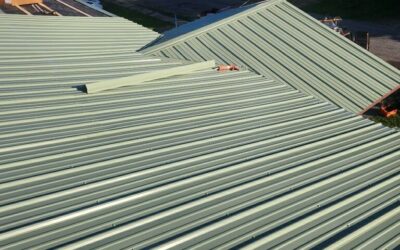What is an ITEL Report for a Roof Damage Insurance Claim?
When your roof suffers damage, whether due to a storm, hail, wind, or aging, the process of filing an insurance claim can be overwhelming. Not only do you need to ensure your roof is properly assessed for damage, but you also need to work with your insurance company to get the compensation you deserve. One important document that plays a crucial role in many roof damage insurance claims is the ITEL report. But what exactly is an ITEL report, and why is it important when you’re filing a roof damage insurance claim?
In this comprehensive guide, we’ll walk you through what an ITEL report is, how it can benefit your insurance claim, and the steps involved in getting one. Whether you’re located in Cleveland, Lakewood, Medina, Beachwood, or other areas in Northeast Ohio, understanding this report can make the insurance process smoother and ensure you’re receiving the appropriate compensation for your roof damage.
What is an ITEL Report?
An ITEL report (also known as an ITEL Roofing Report) is a detailed analysis conducted by a third-party lab service that evaluates the materials and condition of your roofing. ITEL (which stands for “Independent Testing and Evaluation Laboratories”) is a company that specializes in providing precise, accurate assessments of roofing materials and their damage.
When you file an insurance claim for roof damage, the insurance company may require an ITEL report to help them determine the scope of the damage and the cost of repairs or replacement. The ITEL report provides an objective evaluation of your roof’s condition and the specific materials used, which aids both the homeowner and the insurance company in making fair and informed decisions regarding the claim.
How Does an ITEL Report Work?
An ITEL report is typically ordered by a professional roofing contractor, insurance adjuster, or other parties involved in the roofing claim. The process involves several key steps, which we’ll break down here:
1. Inspection of the Roof
The first step in obtaining an ITEL report is a thorough inspection of your roof. A roofing professional will carefully examine the roof to assess the extent of the damage. The inspector will also collect samples of the roofing material, such as shingles, to send to ITEL for analysis.
This inspection should be detailed and focus on all areas of the roof, including any visible signs of damage (such as missing shingles or leaks), as well as potential underlying issues that may not be immediately apparent.
2. Sample Collection
Once the inspection is completed, roofing professionals will collect samples of your roofing materials. These samples are typically sent to ITEL’s lab for testing. ITEL is capable of analyzing a variety of roofing materials, such as asphalt shingles, wood shakes, tiles, and more.
In cases of severe damage, the samples collected might be small pieces of the roof that can be analyzed for damage, wear, and tear, or degradation due to weather conditions. The purpose of this step is to get a precise evaluation of your roofing materials to determine whether they need to be replaced or if a repair is sufficient.
3. Laboratory Analysis
Once the samples arrive at the ITEL laboratory, a team of experts analyzes the materials in depth. The laboratory will evaluate factors such as the type, age, and condition of the roofing materials. ITEL uses state-of-the-art equipment and testing techniques to provide a scientific and accurate assessment of the materials.
Some of the key analyses performed during this phase may include:
- Material Composition: Understanding the exact make-up of your shingles (such as their brand, color, and style).
- Durability Testing: Analyzing how well the materials have withstood various environmental conditions, including wind, rain, and temperature fluctuations.
- Compatibility with New Materials: Determining whether the damaged roofing materials can be replaced with similar, compatible materials.
ITEL’s findings are then compiled into a report that provides a detailed breakdown of their findings.
4. Report Generation
After the analysis is completed, ITEL generates a comprehensive report that includes all of the findings. The report contains several critical pieces of information, such as:
- Roofing Material Identification: The exact make, model, and color of the roofing materials on your home.
- Damage Assessment: A description of the damage found during the inspection and any potential causes.
- Recommended Repairs or Replacements: Whether the damaged materials can be repaired or if a full replacement is required.
- Cost Estimates: An estimated cost for repairs or a full replacement, based on the evaluation of the materials and the extent of the damage.
Why is an ITEL Report Important for Roof Damage Claims?
An ITEL report serves as an impartial and accurate evaluation that helps homeowners, contractors, and insurance companies reach a fair resolution. Here are some reasons why this report is so important in the context of roof damage insurance claims:
1. Accurate Damage Assessment
Roof damage can vary widely depending on the cause and severity. While you may know that your roof is leaking or has visible damage, it can be difficult to determine the exact extent of the problem without a thorough assessment. An ITEL report provides a professional and scientific evaluation of your roofing materials, which gives the insurance company a better understanding of the damage and the appropriate course of action.
For example, in Willoughby or Chardon, where hailstorms are a common occurrence, ITEL can help the insurance company assess whether the hail damage to your roof is significant enough to require replacement or if repairs will suffice.
2. Faster and Smoother Claims Process
Insurance companies often need objective evidence to approve claims. An ITEL report helps speed up the approval process by providing an unbiased, detailed analysis of the damage. It removes much of the guesswork involved in the claims process, which can ultimately lead to a faster resolution.
With a reliable report, your insurance adjuster can quickly determine whether your claim meets the criteria for full compensation. In areas such as Pepper Pike and Euclid, where frequent storm damage can impact homes, this objective report can help streamline the claims process, ensuring you get the coverage you need without delays.
3. Ensuring Fair Compensation
Insurance companies may only offer you compensation based on their assessment of the damage. However, if the insurance company’s adjuster misses key damage or underestimates the cost of repairs, your compensation may fall short. By using an ITEL report, you’re ensuring that the damage is assessed accurately, and you can request compensation based on the actual condition of your roof.
ITEL reports can also prevent discrepancies between different assessments. If you and the insurance company disagree on the roof’s condition, the ITEL report provides a clear, third-party evaluation that both parties can rely on.
4. Helps with Roof Replacement
If your roof needs to be replaced, an ITEL report can also assist in finding the right materials to use for the replacement. Because the report includes detailed information about your current roofing materials, it can help ensure that the new roof matches the existing one in terms of quality, color, and durability. This is especially important for areas with strict homeowners association (HOA) rules regarding roof aesthetics, like Chagrin Falls and Kirtland Hills.
How to Get an ITEL Report for Your Roof?
Getting an ITEL report is relatively straightforward, but it does require the involvement of professionals who can properly assess your roof’s damage. Here are the basic steps involved in obtaining an ITEL report:
1. Hire a Certified Roofing Contractor
The first step is to hire a certified and experienced roofing contractor who has experience with the insurance claim process. They will perform a thorough inspection of your roof and determine if it’s necessary to request an ITEL report. In Madison and Lakewood, where roofing companies are accustomed to handling insurance claims, a reputable contractor will know when an ITEL report is needed.
2. Roof Inspection and Sample Collection
Once the roofing contractor has inspected your roof, they will collect samples of your roofing materials. These samples are then sent to the ITEL laboratory for testing and analysis.
3. Receive the ITEL Report
After ITEL completes the laboratory analysis, you will receive the ITEL report. This report will contain all of the relevant details about your roof’s condition, materials, and damage assessment. Your roofing contractor can help you understand the findings and incorporate them into your insurance claim.
4. Submit the Report to Your Insurance Company
The final step is to submit the ITEL report to your insurance company, along with your claim. The report will serve as the foundation for your insurance adjuster’s review and will help guide the approval of your claim.
Conclusion
An ITEL report is a valuable tool in the roof damage insurance claims process, offering an objective, detailed assessment of your roof’s materials and condition. Whether you’re dealing with storm damage in Cleveland, Lakewood, or Beachwood, having a reliable and accurate report can make all the difference in getting the compensation you deserve.
If your roof has been damaged and you’re preparing to file an insurance claim, consider working with a certified roofing contractor who can help you obtain an ITEL report and navigate the claims process. With the help of a thorough ITEL report, you can ensure that your roof is properly assessed and that you receive fair compensation to restore your home’s protection.
At S&K Construction and Remodeling LLC, we specialize in working with insurance companies and can assist you in obtaining an ITEL report for your roof damage. Contact us today to schedule a consultation or learn more about how we can help you through the insurance claim process.
 (440) 307-2060
(440) 307-2060



